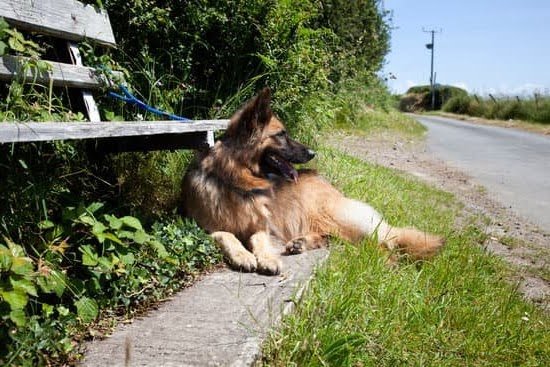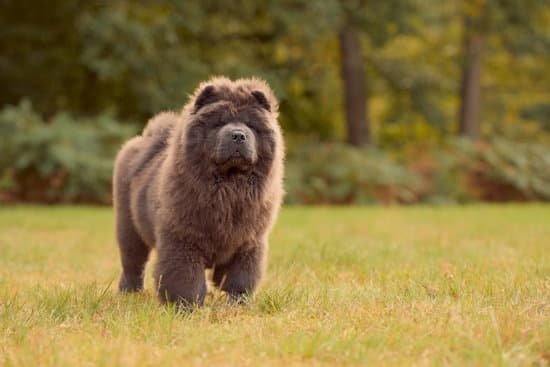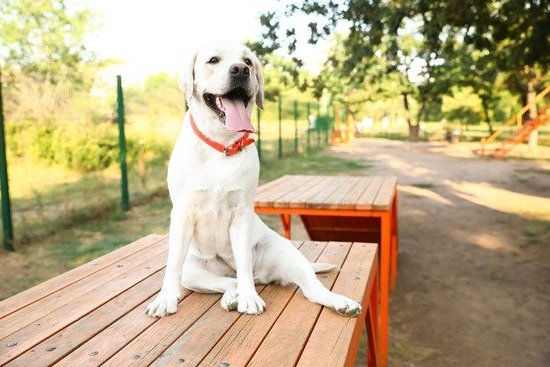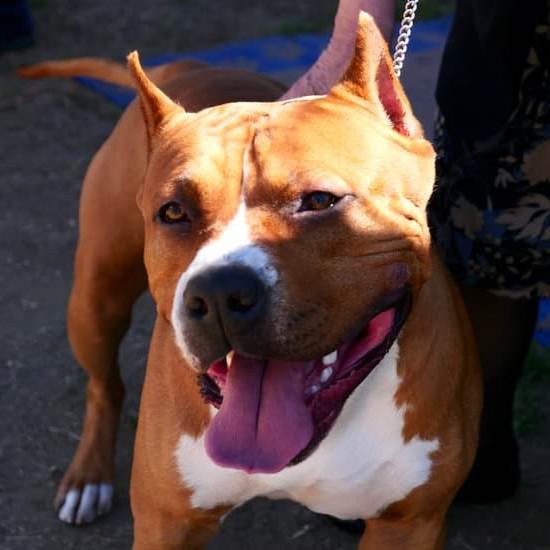Introduction
Dog stairs training is a way to teach dogs how to safely and confidently go up and down stairs. This type of training helps minimize the strain on a dog’s legs, build the muscles around their hips, and help them learn how to maneuver tricky or narrow turns when navigating stairs safely. By teaching your dog proper stair-climbing etiquette, you can ease potential dangers such as tripping or falling down steps or getting injured due to lack of experience in using lifts or ramps. The primary benefit of this form of training is that it can improve your pet’s balance and coordination while at the same time make them more confident when encountering staircases indoors or outdoors. It also helps reduce the risk of an unforeseen injury during a fall that could leave your beloved pup seriously hurt.
In terms of who needs this kind of training, any house pets, especially those with short legs or large bodies, might need special help in mastering the art of climbing stairs. Older pets may also require extra guidance in understanding how best to navigate staircases as age plays an important factor in mobility and overall coordination levels. Puppies are often left out when it comes to introducing them to stair-climbing etiquette but they too have an obligation to learn how navigate up and down stairs once they reach the necessary maturity level for that purpose.
Understand Your Dog’s Current Mobility
When it comes to dog stairs training, the first step is understanding your dog’s individual mobility levels and capabilities. Depending on their size and physical health, some dogs may be more comfortable using stairs than others. Talk to your veterinarian about your dog’s individual needs before selecting a training strategy for teaching them how to use stairs.
Next, consider the layout of your home and the type of stairs you have in it. Determine if you’ll need any additional assistive measures such as a ramp or railings. If the stairs are steep or twisty, it might prove too challenging for an older or larger breed of dog. In this case, a gradual ascent may be better suited to help your dog build up confidence and make the journey easier and safer.
As you start tackling your training goals, set achievable challenges that work with both you and your pup’s current abilities and comfort level. For example, rather than throwing a treat all the way up the staircase for incentive, break each ‘climb’ into small successes first by tossing treats onto each step closest to them until they reach their goal higher up. Also try giving verbal commands when they’re on a stair so they become more familiar with following instructions—a core concept of every behavior reinforcement program!
Tips on Getting Your Dog Comfortable With Stairs
One of the most important steps in successfully dog stairs training is to get your pet comfortable with stairs. The process doesn’t have to be overwhelming – with a little patience and guidance, you can help your pup become proficient in using stairs. Here are some tips for getting started:
1. Get familiar: If your dog has never seen or used stairs before, introduce them slowly. Show them around and give them plenty of time to explore at their own pace. Be sure to be patient and encouraging – praise them for any movement towards the stairs, even if it’s simply sniffing around from a distance.
2. Take it slow: Don’t rush your pup into climbing up or down the stairs all at once. Start by having them walk from one step to the next, taking their time and feeling comfortable with each movement. Praise them for each step taken and give treats as an extra incentive for success!
3. Use a leash: To start off, it is helpful to have your pup on a leash while using the stairs. This allows you to guide him in the right direction and keep him safe if he should hesitate or feel uncomfortable while climbing up or down. Plus, having the extra comfort of knowing he won’t run off!
4. Guide with treats: Keep encouragement high throughout the process by offering treats at each step taken! We recommend using smaller pieces of food that break apart easily so treat dispensing can happen frequently without overfeeding. This will keep motivation positive as they make progress with every successful stair climb or descent!
5. Supervise closely: Until your pup is proficient in going up and down stairs safely, always be nearby to supervise closely in case they need help or guidance in any way – up close support is key for any kind of training success!
Training Techniques to Help Guide Your Dog Up and Down the Stairs
The first step in dog stairs training is to ensure your pet is physically and emotionally ready. Puppies need exercise and enough rest to have the strength needed to go up and down stairs confidently. Dogs will also benefit from having their nails filed or cut, since long nails can cause a loss of traction on slippery surfaces such as wood flooring.
Another important training technique involves providing positive reinforcement when your dog successfully completes a step in going up or down the stairs. Offer treats and praise for even small successes, and avoid scolding for mistakes. This method will help encourage your dog’s confidence in climbing the stairs without fear of being punished for improper behavior. Additionally, always make sure to accompany your pet up and down the stairs to provide reassurance.
It’s also important to only introduce one set of stairs at a time into your pet’s routine so that they don’t become overwhelmed with too much change all at once. Begin with simply rewarding your pet for taking one step up; afterwards you can gradually increase the number of steps until they are used to going all the way up and down by themselves. You can also use cues when introducing new heights such as “up” or “down” to prompt them – this could significantly speed up their learning process! Lastly, create a safe space around the staircase by installing safety gates if necessary or prevented access through other means so that there is no risk of accidents while they practice mastering the skill.
Planting Positive Behaviors and Rewards Along the Way
Training your dog to use his doggy stairs is an exercise in patience and consistency. It’s important to keep the lessons fun for him and emphasize that using the stairs is something he can do himself. Start by placing the stairs close to wherever it’s intended for use, like a bed or couch, in order for your dog to see it and become familiar with where it will be when you start training him. Create structure: begin practice sessions at regular intervals so your dog knows what’s expected of him. Lead him up the stairs one step at a time while repeating commands such as “upstairs” or “step up”. Praise his successes along the way– snuggles, pets and treats are all good rewards! Reinforce positive behavior. Eventually, adjust the number of steps used during practice sessions to allow your pooch to work up to a full flight of stairs more gradually over time until he has mastered it. The key here is patience and repetition; never force your pup if they don’t understand right away, just stay positive! Keep practicing with lots of love and praise, and soon enough both you and your pup will be happily making their way up those steps.
Troubleshooting and Overcoming Setbacks
When training your dog to use stairs, it is common for them to experience setbacks. If you run into a roadblock, don’t lose hope. Troubleshooting and overcoming these challenges is key.
Firstly, if your pup is hesitant to climb the stairs, try using verbal encouragement and treats or rewards to motivate them. Give them plenty of time and reinforcement so they can build confidence in their efforts and learn at their own pace. Secondly, you may need to start slowly by breaking down the task into manageable pieces. For example, if they are having difficulty climbing an entire flight of stairs, create a step-by-step plan where they will ascend one step at a time in a relaxed environment until they become comfortable with the process. Lastly, provide plenty of positive reinforcement when your pup displays signs of progress and success. This will help keep him motivated while also teaching that using the stairs is beneficial behavior. Be patient and persistent with your training regime to prevent further setbacks from occurring so your pup can master this life skill quickly.
Recommended Products to Enhance Dog Stairs Training
To enhance the training experience when teaching your dog how to use stairs, there are a few products available on the market that can make the process simpler. Dog ramps can be an excellent addition for those dogs who may have difficulty or anxiety with using traditional stairs. Dog ramps are typically lightweight and easily portable, and allow for an alternate way of ascending or descending levels. Also, providing grip tape along the stairs or on any railing you might have in your home provides extra traction for your pet who may struggle with any slipperiness caused by their paws. Another addition you could use is noise treats to ensure your pup is aware of their footing as they ascend and descend. This can help them become accustomed to any loud noises from creaky staircases or stepping on certain areas. Finally, it is essential to provide plenty of positive reinforcement when teaching your pup how to use stairs safely — treats, verbal praise and plenty of patience will get them used to being safe and comfortable around stairs quickly!
Finalizing the Stairs Training Process
Once your fur-baby has learned the basic technique of using dog stairs, it’s time to teach them how to use a set of stairs properly and effectively. Depending on the size and age of your pup, you may need to adjust the distance between each step, as well as any railings or edges. As with all training processes, it’s important to remain patient, encouraging and positive during these final steps. Reward success with lots of treats and praise!
Make sure there’s direct access to their food on high surfaces like bed frames or couches. Additionally, if you want your pup to be confident in their abilities, encourage them to practice regularly by providing mobility challenges throughout your home. This will help them become more familiar with different types of stairs. If your pup is scared or nervous about leaving the first step when practicing on multiple steps, start from the bottom step and gradually move up. Eventually they will get more comfortable each time they attempt the stairs again until they can confidently take all steps without hesitation. Finally, keep in mind that this is a process which requires lots of patience and reinforcement; provide ample praise whenever your pup attempts the stairs so that each session ends on a positive note!
Conclusion
Once your dog has mastered stairs training, the benefits extend far beyond a simple stair climbing exercise. Dogs that know how to use stairs are often more independent because they can access areas of the home or yard with increased ease. This sense of independence gives them a greater sense of security and confidence knowing that help is nearby should they ever need it. Additionally, mastering stairs training gives owners peace of mind knowing their pet has fewer risks of injury due to falling off furniture or from jumping off high places. It also eliminates the need for expensive ramps and other assistive mobility devices which can take up space in the home.
The ultimate benefit to mastering stair training is improved quality of life for both you and your pup. Providing an environment where your pup can easily move up and down wherever they want improves their overall welfare as well as yours by allowing everyone in the family a greater level of comfort and convenience when using or visiting certain spaces in the house. From increasing physical exercise to eliminating worry caused by poor maneuvering skills, doggy stairs training holds many long-term rewards that go beyond its initial training objectives!

Welcome to the blog! I am a professional dog trainer and have been working with dogs for many years. In this blog, I will be discussing various topics related to dog training, including tips, tricks, and advice. I hope you find this information helpful and informative. Thanks for reading!





